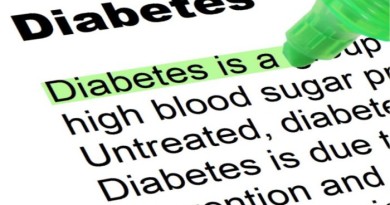Low-cost Digital Solution for the Management of Diabetes
You will agree that increasing number of people use their mobile devices to access information and our world revolves so much around our digital companions. As we embrace the new technologies in healthcare, mHealth (mobile health) interventions to address public health problems grows increasingly feasible and attractive. The most common application of mHealth is the use of mobile phones and communication devices to educate consumers about preventive health care services. In other words, mHealth helps us by bringing doctors advice to our finger tips.
An interesting study from India published in the Journal of Medical and Internet Research showed that 40 percent more people improved their health behaviors as a result of receiving text messages about diabetes prevention.
Diabetes is a Worldwide Problem
Diabetes is estimated to affect 387 million globally, with disease prevalence expected to increase to 592 million by the year 2035. Approximately 80% of people with diabetes live in low- and middle-income countries creating a pressing need for prevention and treatment efforts focused on these regions.
About 66 million people in India have diabetes and 1 million die from it each year. Diabetes is very common among Indian Americans as well. The diabetes prevalence in this population is four times higher than among Caucasians in the United States. Indians get diabetes in their 30’s and 40’s, 10 years earlier than most Americans.
Given the limited healthcare resources in India that does not reach a wide spectrum of people, mobile phones are ideal way to deliver healthcare related messages as mobile phone use is widespread throughout India.
This is the first study to use the power and reach of mobile phones to change diabetes risk behaviors in a large number of people from different parts of a vast country like India.
Text Messaging For Improving Health
The researchers sent text messages twice a week to 1 million people in India advising them to exercise, eat less fat, and eat more fruits and vegetables. The participants received 56 text messages in their choice of 12 languages over 6 months- one message per day for the first 6 days, then 2 messages per week. The control participants received no contact. Messages were designed to motivate improvement in diabetes risk behaviors and increase awareness about the causes and complications of diabetes.
The study results showed that almost 40 percent more people improved their fruit and vegetable intake and reduced their fat intake as a result of the texting (299 showing improvement in the experimental group versus 185 in the control group).
“Noncommunicable diseases, one of the leading health and development challenges of the century, demand simple, proven, cost-effective prevention solutions that can be easily deployed at the population level,” said Nalini Saligram, one of the coauthors of the study. “Our mDiabetes study suggests mobile health technology is a smart solution and has broad implications for diabetes prevention at the population level in low and middle-income countries.”
This is a an interesting study showing a low-cost, low-burden text messaging intervention to prevent degradation of health behaviors over time and ultimately prevent diabetes.
- Adolescents Living With Diabetes - August 6, 2022
- Diabetes Insipidus Symptoms, Causes, & Prevention - July 26, 2022
- Insulin Shortage May Affect Almost Half of the Diabetics by 2030 - November 24, 2018




